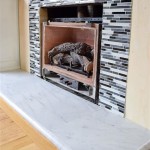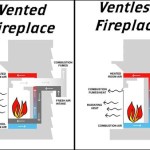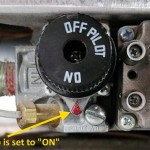```html
Fireplace Gel Fuel: A Comprehensive Guide
Fireplace gel fuel has emerged as a popular alternative to traditional wood-burning fireplaces, offering a blend of convenience, aesthetics, and environmental benefits. This article delves into the composition, function, benefits, safety measures, and proper usage of fireplace gel fuel, providing a comprehensive understanding of this heating and decorative solution.
Fireplace gel fuel is a liquid or gelled substance, typically composed of isopropyl alcohol, water, and a thickening agent. The alcohol content determines the fuel's flammability and heat output, while the water helps regulate the burn and prevent rapid combustion. The thickening agent, often a cellulose derivative or a similar polymer, provides the gel-like consistency, allowing for controlled release and aesthetic appeal when burned in a suitable fireplace or ventless fire pit.
This type of fuel is designed for use in ventless fireplaces, fire pits, and decorative appliances specifically designed for gel fuel. These appliances do not require chimneys or venting systems, as the combustion process produces minimal smoke, ash, or harmful emissions under normal operating conditions. The clean-burning nature of gel fuel contributes to its appeal as an environmentally conscious option.
Understanding the Components and Combustion Process
The primary component of fireplace gel fuel is isopropyl alcohol, also known as rubbing alcohol. This alcohol is readily combustible, providing the heat and flame associated with burning gel fuel. The specific concentration of isopropyl alcohol varies between different brands and formulations, which directly influences the burn time and heat output of the fuel.
Water plays a crucial role in controlling the combustion process. It helps to moderate the rate at which the alcohol burns, preventing uncontrolled flames and potential hazards. The water also contributes to a clean burn by reducing the formation of soot and particulate matter. The ideal water-to-alcohol ratio is carefully balanced to ensure both efficient combustion and safety.
The thickening agent is responsible for the gel-like consistency of the fuel. This agent is typically a polymer that absorbs the liquid alcohol and water, creating a semi-solid substance. The gel form serves several purposes. First, it makes the fuel easier and safer to handle, reducing the risk of spills and leaks. Second, it allows for controlled release of the alcohol vapor during combustion, ensuring a steady and consistent flame. Third, it provides an aesthetic foundation for creating visually appealing flames, often resulting in higher, more vibrant flames compared to liquid alcohol alone.
When ignited, the isopropyl alcohol within the gel fuel vaporizes and reacts with oxygen in the air, producing heat, light, carbon dioxide, and water. The combustion process is relatively clean compared to wood or fossil fuels, resulting in minimal smoke, soot, and ash. The amount of carbon dioxide produced is significantly less than that produced by burning wood or natural gas, making it a more environmentally friendly option.
Advantages of Using Fireplace Gel Fuel
Fireplace gel fuel offers several advantages over traditional wood-burning fireplaces, making it an attractive option for homeowners seeking a hassle-free and aesthetically pleasing heating solution. These advantages range from ease of use and maintenance to environmental considerations and aesthetic flexibility.
One of the most significant benefits is the ease of use. Unlike wood-burning fireplaces, gel fuel requires no chopping, stacking, or hauling of wood. Simply place the gel fuel canister or pour the gel into the designated container, ignite with a long lighter or match, and enjoy the flame. The process is quick, clean, and requires minimal effort. Extinguishing the flame is equally simple; typically, it involves covering the container with a snuffer or lid, which deprives the flame of oxygen.
Maintenance is significantly reduced with gel fuel fireplaces. There is no need to clean up ash, soot, or creosote, which are byproducts of wood combustion. This eliminates the need for regular chimney sweeps and reduces the risk of chimney fires. The absence of these byproducts also contributes to a cleaner indoor environment.
Gel fuel fireplaces are often ventless, meaning they do not require chimneys or flues. This allows for greater flexibility in placement and installation, as the fireplace can be located virtually anywhere in the home without the need for costly and complex venting systems. This is particularly beneficial for apartments, condominiums, and homes without existing fireplaces.
Environmentally, gel fuel is considered a cleaner-burning alternative to wood or fossil fuels. It produces significantly less smoke, soot, and carbon dioxide. While it is not entirely carbon-neutral (as the production and transportation of the fuel do involve carbon emissions), it offers a reduced environmental footprint compared to traditional heating methods. Some gel fuel manufacturers are even exploring the use of bio-based alcohols to further minimize the environmental impact.
Aesthetically, gel fuel fireplaces offer a wide range of design possibilities. The flames can be customized with various decorative accessories, such as ceramic logs, stones, or glass beads, to create a visually appealing and personalized ambiance. The flames themselves can be adjusted in height and intensity, providing control over the heat output and the visual impact.
Safety Precautions and Proper Usage
While fireplace gel fuel offers numerous advantages, it is crucial to adhere to safety precautions and follow proper usage guidelines to ensure a safe and enjoyable experience. Like any fuel source, gel fuel poses potential hazards if mishandled or used incorrectly.
First and foremost, it is essential to use only gel fuel specifically designed for fireplaces and fire pits. Using other types of flammable liquids can create dangerous and unpredictable combustion, leading to fire hazards and potential injuries. Always read and follow the manufacturer's instructions for both the gel fuel and the fireplace appliance.
Never refill a hot or burning gel fuel container. Allow the container to cool completely before adding more fuel. This prevents the risk of flashback ignition, which can occur when flammable vapors come into contact with a hot surface or open flame. It is recommended to wait at least 15 minutes after the flame has been extinguished before refilling the container.
Maintain a safe distance between the fireplace and any flammable materials, such as curtains, furniture, or paper. Ensure that the fireplace is placed on a stable and non-flammable surface. Keep children and pets away from the fireplace when it is in use. Never leave a burning fireplace unattended.
Ensure adequate ventilation in the room where the fireplace is in use. While gel fuel combustion produces minimal smoke, it does release carbon dioxide. Proper ventilation helps to prevent the buildup of carbon dioxide, which can cause drowsiness or headaches. Opening a window or using a ventilation fan can provide adequate airflow.
Store gel fuel in a cool, dry place, away from direct sunlight and heat sources. Keep the containers tightly sealed to prevent evaporation and accidental spills. Do not store gel fuel near flammable materials or open flames. Adhering to these storage guidelines reduces the risk of accidental fires and ensures the longevity of the fuel.
In case of a fire, use a Class B fire extinguisher to extinguish the flames. Class B fire extinguishers are specifically designed for flammable liquid fires. Do not use water to extinguish a gel fuel fire, as it can spread the fire and increase the danger. Familiarize with the location and operation of fire extinguishers in your home.
Regularly inspect the fireplace appliance for any signs of damage or wear. Check for cracks, leaks, or loose connections. If any issues are detected, discontinue use and consult with a qualified technician for repair or replacement. Proper maintenance ensures the safe and efficient operation of the fireplace.
By following these safety precautions and proper usage guidelines, individuals can enjoy the warmth and ambiance of a fireplace gel fuel without compromising safety. Responsible use and vigilance are key to preventing accidents and ensuring a safe and enjoyable experience.
```
Terraflame 25 5 In X Gel Fuel Fireplace The Ethanol Fireplaces Department At Com
Portable Indoor Outdoor Gel Fireplace

Terraflame 25 5 In X Gel Fuel Fireplace The Ethanol Fireplaces Department At Com

The Fireplace Element Inspiration Gel Fuel

Lloyd Modern Gel Fuel Fireplace Luxury Fire

Real Flame Gel Fireplaces Ventless Portable Fireplace Fuel White Electric Indoor

What Is A Ventless Bio Ethanol Fireplace Or Gel Fuel Anywhere

Real Flame Devin Ventless Gel Fireplace Com

Real Flame 13oz 24pk Premium Gel Fuel Cans Target

Outdoor Greatroom Company Inspiration Gel Fuel Fireplace Hearth And Home Distributors Of Utah Llc
Related Posts








